A garden that bursts with color in every season is the dream of many plant lovers — but not everyone has the time or energy to maintain high-maintenance plantings. The good news? With the right selection of low-maintenance shrubs, you can enjoy vibrant hues and lush textures all year long, without constant pruning, fertilizing, or fussing.
Certain shrubs are true stars when it comes to delivering year-round interest. From evergreen foliage to brilliant berries, from stunning winter bark to spring blooms, these plants keep your garden looking alive and inviting no matter the weather. Better yet, many of them are drought-tolerant, disease-resistant, and well-suited for both urban and rural landscapes.
In this guide, I’ll introduce you to 18 easy-care shrubs that will transform your outdoor space into a colorful sanctuary — through every season. Whether you’re designing a new landscape or refreshing an existing one, these reliable beauties will help you create a garden that’s both beautiful and effortless to maintain.
Hydrangea
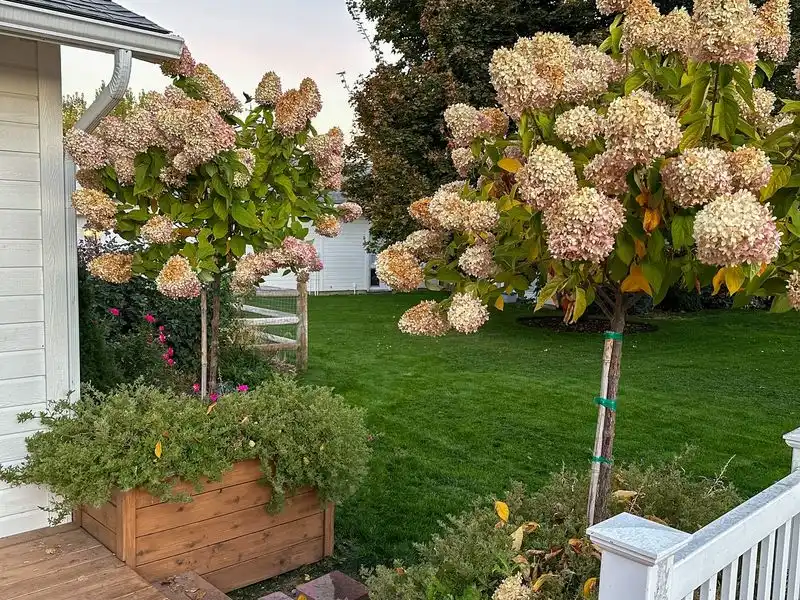
Famed for its voluminous blooms, the hydrangea captivates with colors ranging from vivid blues to soft pinks. This shrub thrives in partial shade, making it a versatile choice for various garden settings. As the seasons change, watch it transform, offering a kaleidoscope of hues. Its adaptability to different soil types adds to its charm. Did you know? The color of hydrangea flowers can change based on soil pH, offering a fun experiment for garden enthusiasts. Easy to maintain, it only requires regular watering to keep its blooms showy and vibrant.
Spirea
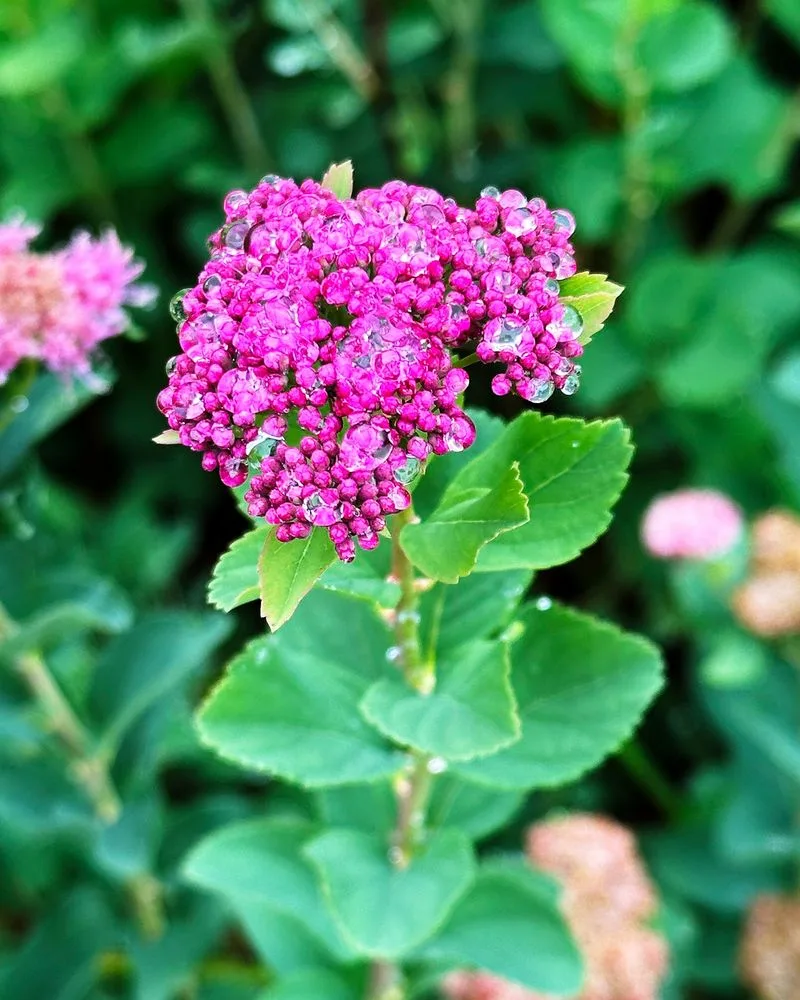
Grace and resilience define spirea, a shrub that lavishes gardens with clusters of tiny flowers. Spring and summer witness its blooming, painting gardens in soft whites and pinks. A hardy plant, it withstands various climates, requiring little more than occasional pruning. The cascading branches add a whimsical touch to landscapes. Its foliage turns a striking orange in fall, providing more than just floral beauty. Spirea’s compact form makes it ideal for borders or as standalone pieces. This plant invites butterflies, enriching the biodiversity of any garden space.
Boxwood
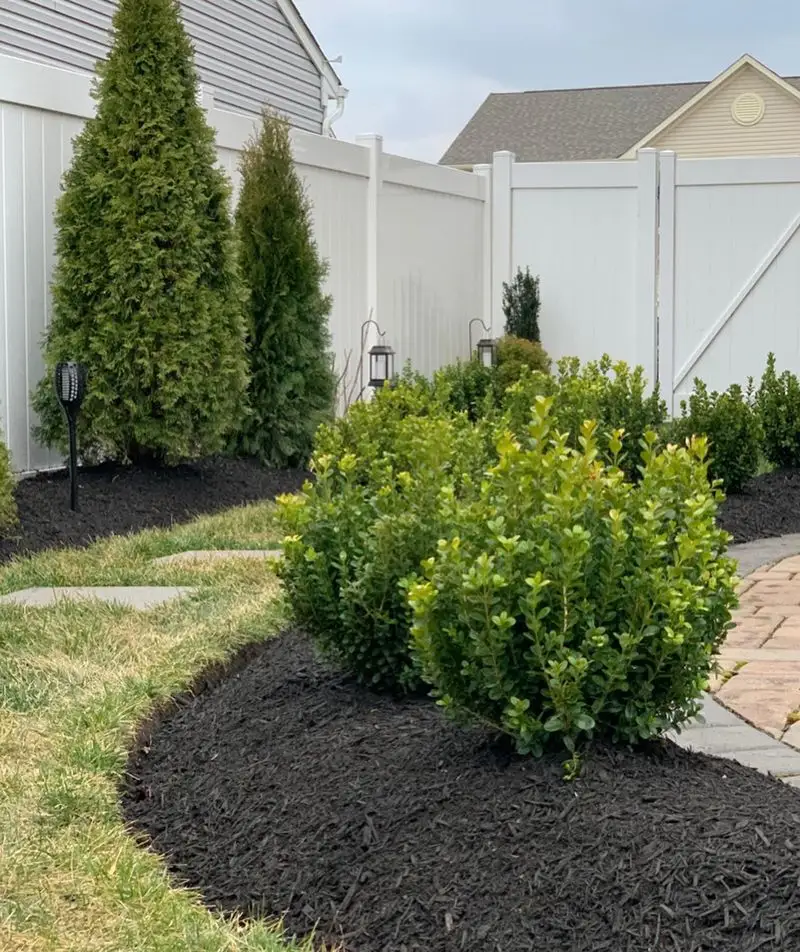
Boxwoods exude elegance with their dense, evergreen foliage that can be shaped into beautiful hedges or topiaries. These shrubs are a staple in classic garden designs, offering year-round structure and color. Tolerant to pruning, they can be sculpted to match your aesthetic desires. With minimal watering needs, they are perfect for those who prefer low-maintenance plants. Historically, boxwoods have been symbols of immortality and prestige, often found in ancient gardens. They thrive in both sun and shade, adapting well to various garden environments.
Rhododendron

Rhododendrons stand out with their spectacular floral displays, boasting large, vivid blooms in spring. They prefer dappled shade and acidic soil, thriving in woodland garden settings. These shrubs are not only visually stunning but also attract hummingbirds, adding lively movement to your garden. Despite their elegant appearance, rhododendrons demand little care beyond mulch and occasional pruning. Their deep green leaves provide structure, ensuring year-round interest. Did you know? Rhododendrons were once believed to be a sign of caution in Victorian flower language, due to their toxicity.
Azalea

Bursting with color, azaleas are a springtime favorite, offering blooms in a spectrum from reds to oranges. These shrubs thrive in partial shade, making them ideal for understory planting. Known for their minimal maintenance needs, azaleas require just regular watering and occasional fertilization. They can be evergreen or deciduous, adding variety to garden planning. Their alluring blooms are a magnet for bees and butterflies. Interestingly, azaleas are closely related to rhododendrons, sharing similar growing requirements but offering a more compact form.
Japanese Barberry
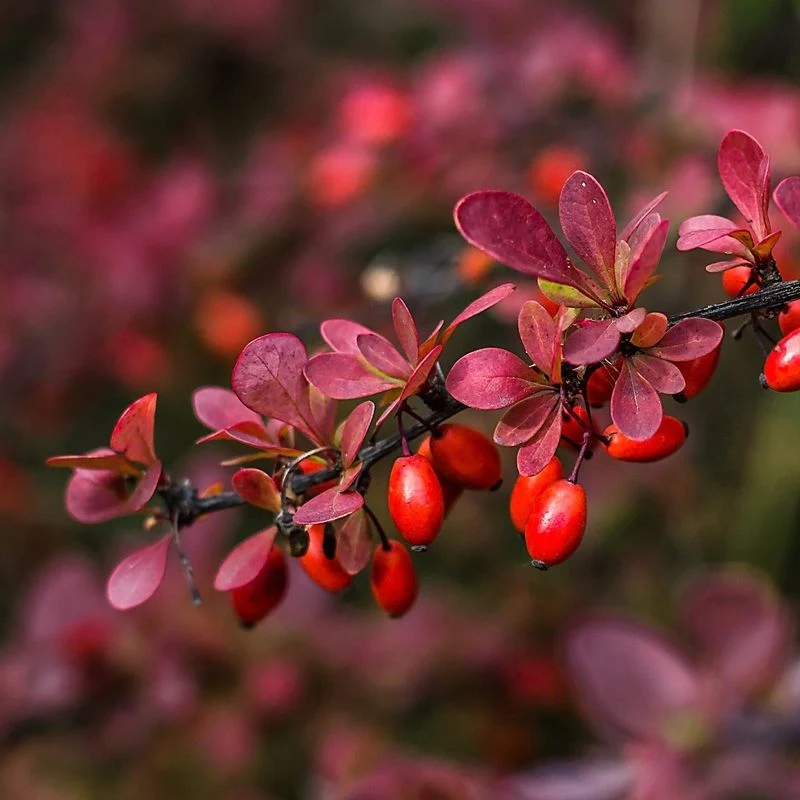
Japanese barberry stands out with its vibrant red foliage and small yellow flowers. This resilient shrub is perfect for those seeking year-round color with minimal effort. Its thorny branches make it a natural barrier, ideal for hedges. Besides its aesthetic appeal, barberry is known for its adaptability to various soil conditions and resistance to pests. Did you know? It’s considered an invasive species in some areas, so check local guidelines before planting. The foliage turns a striking orange in autumn, adding to its seasonal charm.
Butterfly Bush
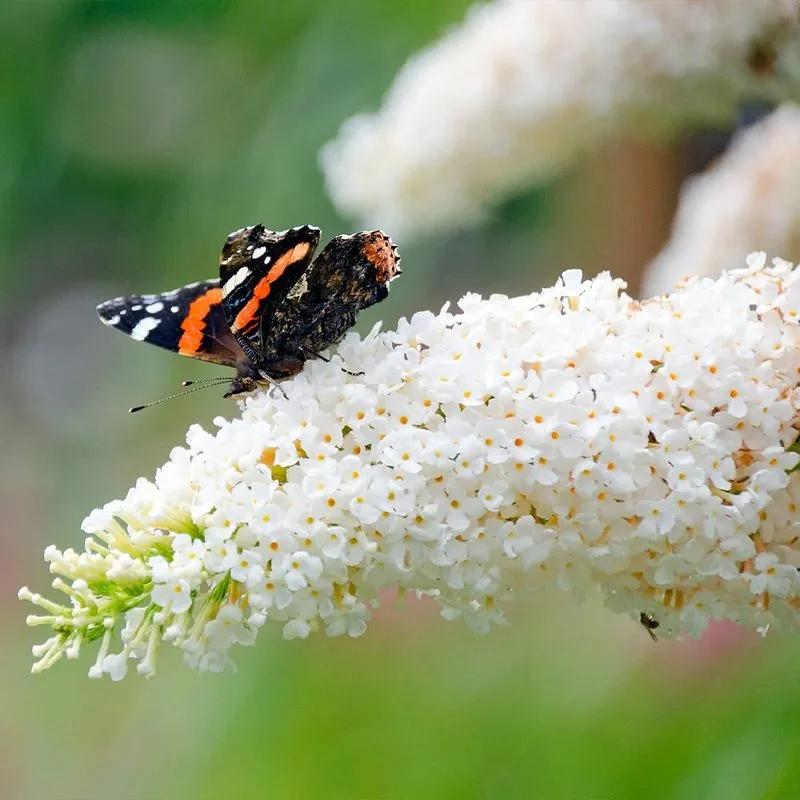
Earning its name, the butterfly bush is a magnet for butterflies, charming gardens with its fragrant, elongated flower spikes. Blooming from summer to fall, it offers a vibrant display of purples, pinks, and whites. This low-maintenance shrub flourishes in full sun and well-drained soil, requiring only occasional pruning to encourage new growth. Its rapid growth makes it perfect for filling spaces quickly. Though captivating, it’s considered invasive in some regions. Its appealing scent and nectar-rich blooms make it a favorite among pollinators, enriching your garden’s ecosystem.
Forsythia

Forsythia heralds spring with its cheerful yellow flowers, often blooming even before leaves emerge. This early bloomer is a sight to behold, illuminating gardens with its golden glow. Forsythia requires minimal attention, thriving in full sun and a variety of soil types. Regular pruning helps maintain its shape and encourages denser blooming. Its arching branches can be used creatively in garden designs. A fun fact: forsythia flowers are a traditional symbol of anticipation and promise, reflecting the joy of spring’s arrival.
Evergreen Euonymus

Evergreen euonymus offers lasting beauty with its glossy, variegated leaves that remain vibrant throughout the seasons. This hardy shrub suits a range of garden styles, from modern to traditional. Its tolerance to various light conditions, from full sun to partial shade, adds to its versatility. Minimal care is needed beyond occasional trimming to keep it neat. The evergreen euonymus is also resistant to many common pests. Did you know? Its name is derived from the Greek words for “good” and “name,” reflecting its esteemed place in gardens.
Red Twig Dogwood

Red twig dogwood captivates with its fiery branches that stand out starkly against winter’s dullness. While its summer foliage is lush and green, it’s the winter display that truly shines, offering visual interest when most gardens lie dormant. This shrub is low-maintenance, thriving in full sun to partial shade and tolerating wet soils. Regular pruning helps maintain the vivid color of its branches. It’s a fantastic choice for gardeners looking to add winter charm. Historically, dogwood branches were used for crafting due to their strong, flexible nature.
Dwarf Fothergilla
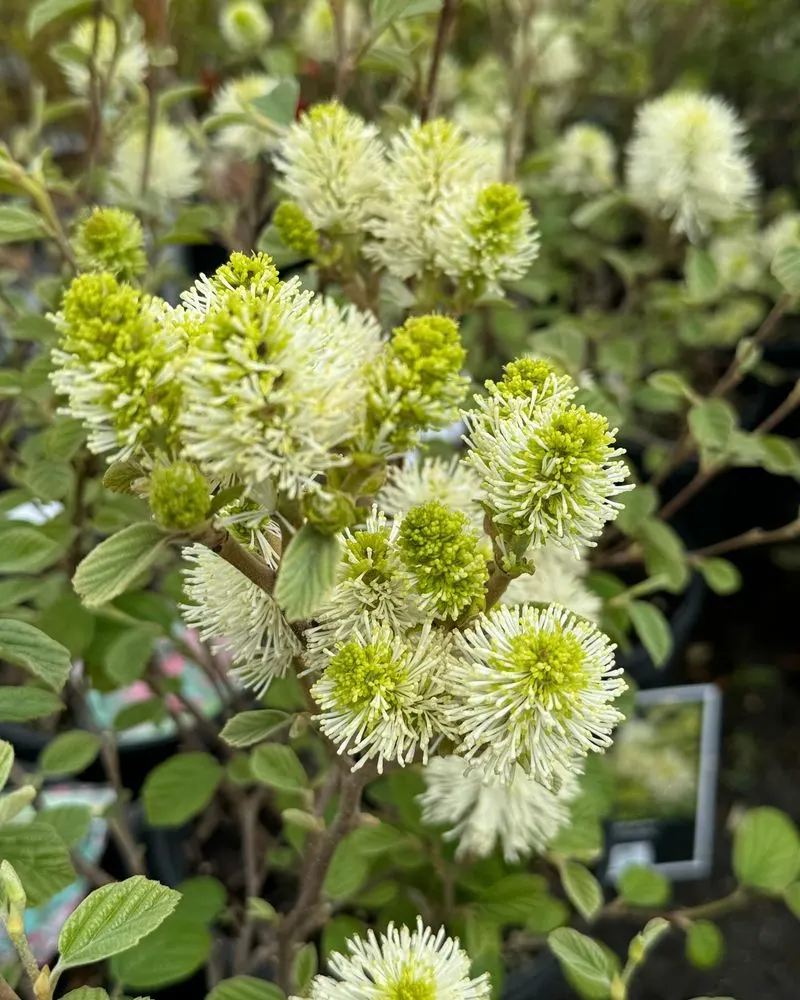
Dwarf fothergilla enchants with its unique bottlebrush flowers and striking fall foliage. In spring, it blooms with white, fragrant flowers that attract pollinators. As autumn approaches, the leaves transform into a brilliant mix of orange, yellow, and red. This shrub is perfect for borders or as a standalone feature, requiring little more than well-drained soil and occasional watering. Its compact size suits smaller gardens or urban landscapes. A quirky fact: dwarf fothergilla is named after Dr. John Fothergill, an 18th-century English physician and plant enthusiast.
Holly
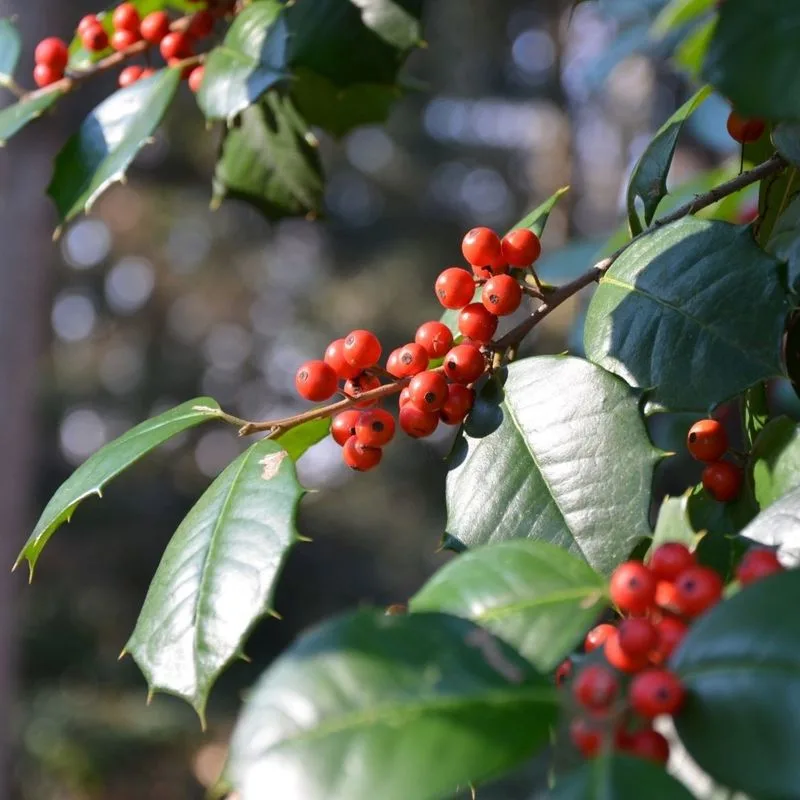
Holly is synonymous with festive cheer, showcasing glossy green leaves and vibrant red berries. This shrub is not only a holiday favorite but a year-round delight, providing structure and color to gardens. It thrives in both sun and shade, adapting to various climates and soil types. Beyond its ornamental appeal, holly berries offer food for birds during winter. Regular pruning helps maintain its shape and encourages berry production. Did you know? Holly has been a symbol of protection and good luck throughout history, often used in ancient rituals.
Smoke Bush
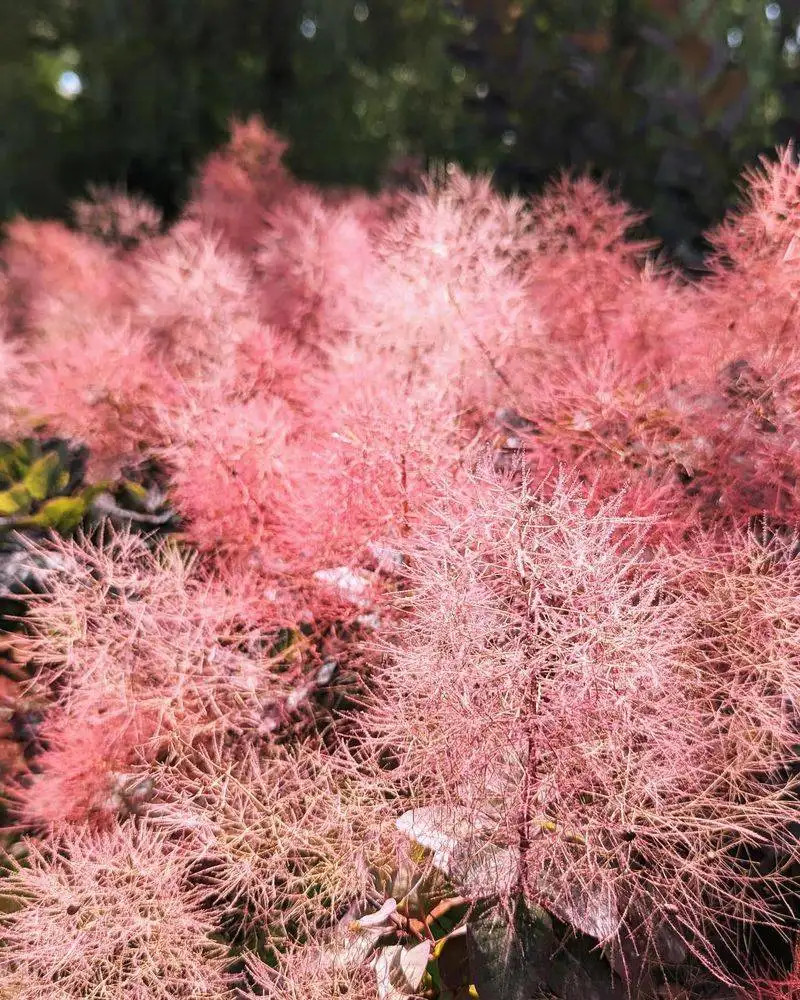
The smoke bush is a visual delight with its unique, plume-like flowers that resemble puffs of smoke. These airy blossoms appear in late spring, adding an ethereal quality to garden spaces. Its foliage, ranging from deep purple to green, offers a dramatic backdrop. This shrub is drought-tolerant and thrives in full sun, requiring minimal care. Regular pruning enhances its bushy appearance. Fun fact: the smoke bush’s Latin name, Cotinus, is derived from the Greek word for olive, reflecting its Mediterranean origins. It’s an excellent choice for adding texture and color.
Heavenly Bamboo
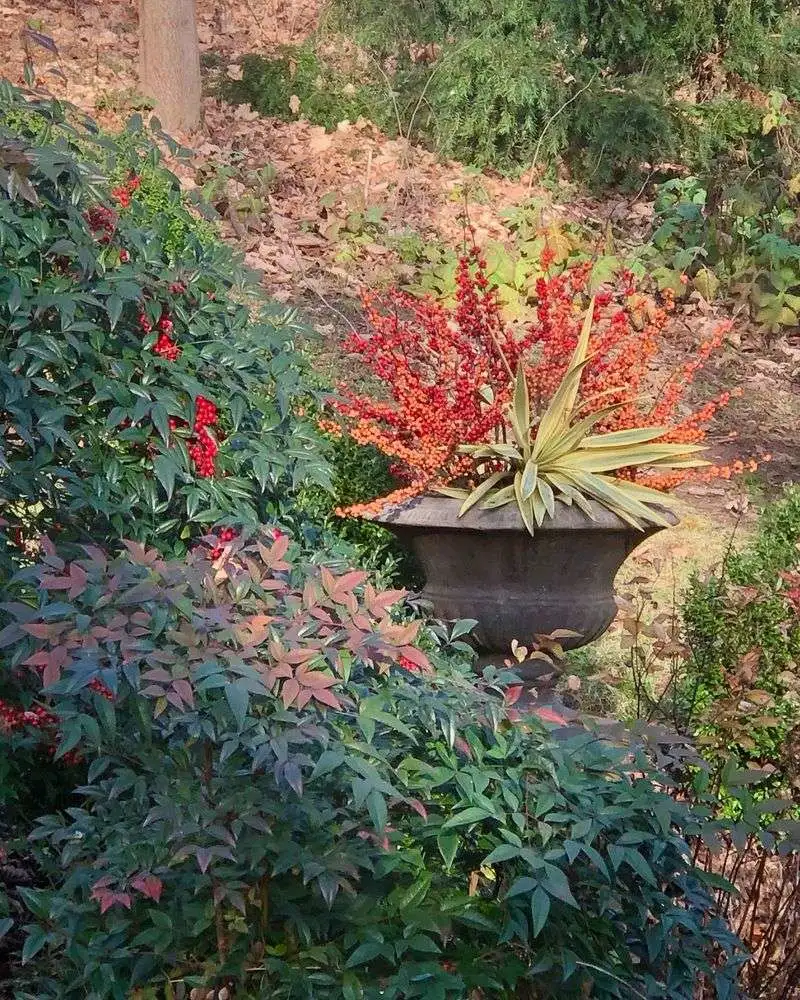
Despite its name, heavenly bamboo is not a true bamboo but offers similar grace with its slender stems and delicate leaves. It bursts into color with red berries and bronze-red foliage in autumn. This adaptable shrub is perfect for adding vertical interest to gardens, thriving in various light conditions. Minimal watering and occasional pruning keep it vibrant. It’s known for its air-purifying qualities, enhancing both visual and environmental appeal. Interestingly, heavenly bamboo is often associated with good fortune in Asian cultures, symbolizing resilience and prosperity.
Lilac

Lilacs are cherished for their intoxicating fragrance and beautiful clusters of flowers. Blooming in late spring, they infuse gardens with their signature scent and vibrant purple hues. These shrubs thrive in well-drained soil and full sun, demanding little more than yearly pruning. Their enchanting aroma makes them a beloved choice for sensory gardens. Fun fact: lilacs symbolize love and renewal, making them a popular choice for wedding bouquets. While typically purple, they come in various shades, offering versatility in garden design.
Pieris
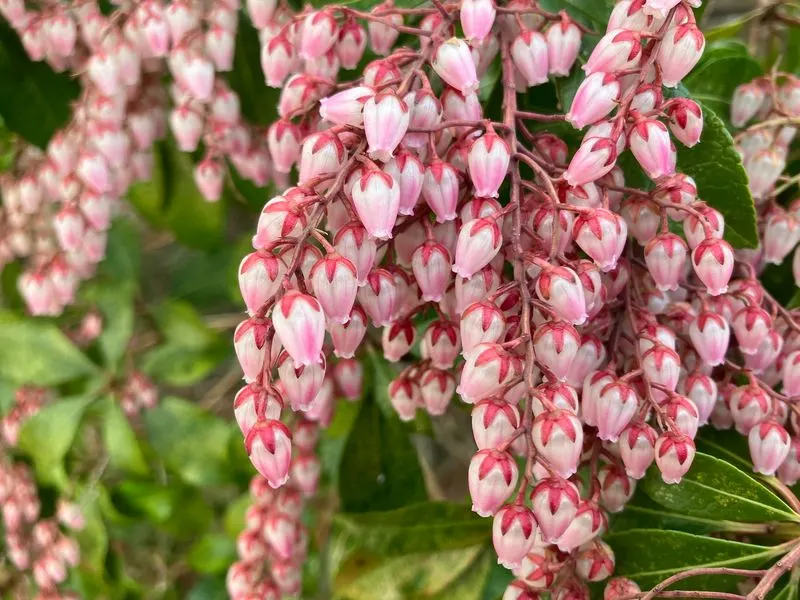
Pieris dazzles with its cascading clusters of white flowers and striking new growth, which emerges in shades of red and pink. This evergreen shrub thrives in acidic soil and partial shade, making it ideal for woodland gardens. Its bell-shaped blooms attract pollinators, adding life to your garden. Minimal maintenance is required beyond ensuring soil moisture. The pieris is often associated with serenity and is a staple in Japanese garden designs. Its year-round interest and elegant form make it a valuable addition to any landscape.
Winterberry

Winterberry offers vibrant color when gardens need it most, with its bright red berries adorning bare branches in winter. This deciduous holly is a perfect choice for creating seasonal interest, especially when planted in groups. It thrives in wet soils and full to partial sun, requiring minimal care. Birds love its berries, making it a wildlife-friendly option. Interestingly, winterberry has been used in traditional medicine for its supposed health benefits. Its striking appearance and adaptability make it a standout choice for winter gardens.
Rose of Sharon
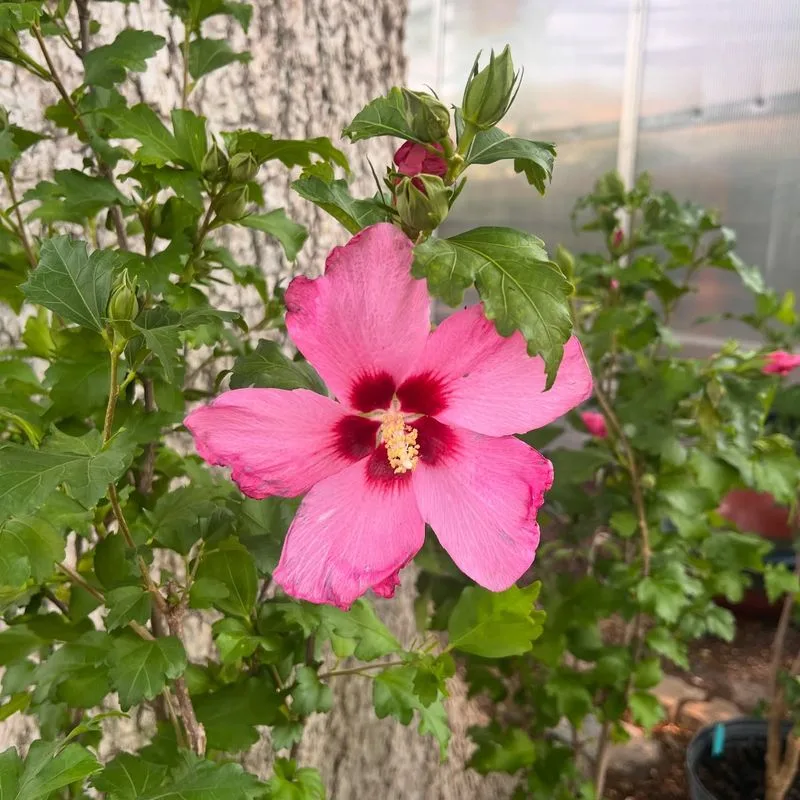
Rose of Sharon brings a tropical feel to gardens with its large, hibiscus-like flowers. Blooming from midsummer to fall, it offers a continuous splash of color. This hardy shrub thrives in full sun to partial shade and adapts to various soil conditions. Minimal pruning is required, making it ideal for low-maintenance gardeners. Its blooms attract hummingbirds and butterflies, adding dynamic movement and vitality. Despite its exotic appearance, Rose of Sharon is incredibly resilient. Fun fact: it is the national flower of South Korea, symbolizing endurance and determination.

